Ultimate Guide to HR Integration: Top Use Cases and Benefits
Discover HR Integration benefits by connecting payroll, recruiting, benefits, and finance. Explore top use cases for scaling SaaS, fintech, and e-commerce.
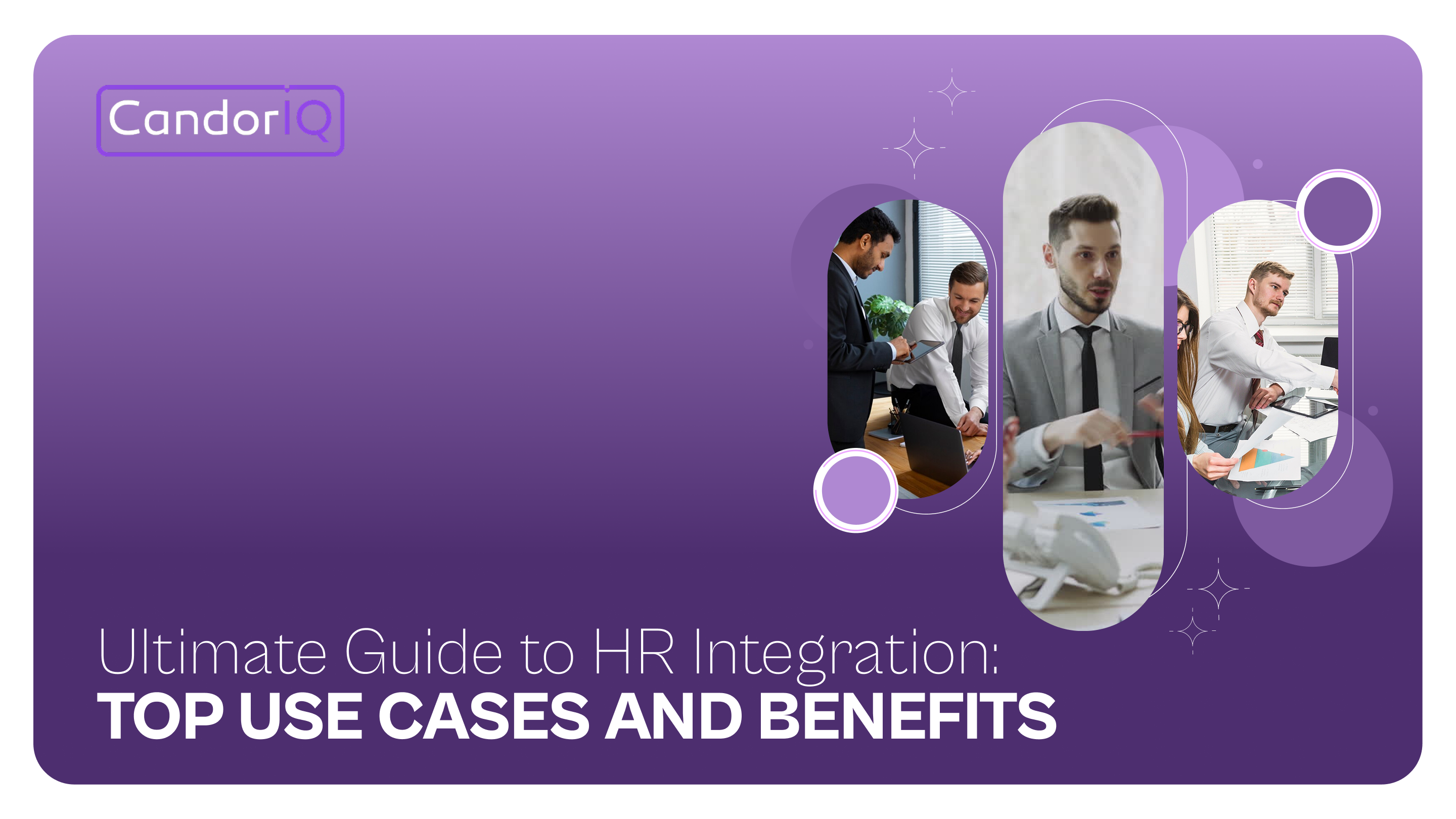
Payroll errors piling up, offer approvals dragging, and compliance reports cobbled together from half a dozen spreadsheets, these are the kinds of headaches that scaling companies know too well. The strain only grows as headcount spreads across multiple systems, entities, and geographies, leaving HR and finance teams chasing accuracy instead of driving strategy.
It’s no surprise that the global human resource technology market is projected to reach $88.38 billion by 2033, growing at an 8.97% CAGR. Companies are betting on connected tools because the alternative is stalled hiring, budget overruns, and gaps that carry real compliance risk. This is where HR integration comes into play. Done right, HR integration creates a single thread across recruiting, payroll, benefits, and finance.
In this guide, we’ll cover the top use cases and the practical benefits for scaling businesses.
In a Nutshell
- Data reliability matters most: HR Integration connects payroll, recruiting, and benefits, reducing errors and giving finance and HR leaders consistent records to manage complexity in scaling companies.
- Hiring-to-payroll speed: Linking ATS, HRIS, and payroll shortens onboarding, moving hires into payroll within days, not weeks, cutting manual lag and costly administrative rework cycles.
- Compensation visibility: Real-time sync between HR and finance improves budget control, aligning pay, bonuses, and equity planning to prevent overspending during rapid scale across multiple entities.
- Trends shaping HR systems: Unified APIs, event-driven updates, warehouse-native analytics, and composable stacks are redefining HR Integration, giving growth-stage firms scalable, stable frameworks for expansion.
What is HR Integration?
HR Integration refers to connecting Human Resources systems, tools, and processes into a single framework that reduces redundancy, improves data accuracy, and strengthens organizational control.
For US mid-sized and scaling companies, HR Integration addresses pain points such as fragmented workflows, compliance risk, manual errors, and lack of budget oversight, issues that become harder to manage as headcount and complexity grow. By tying together the 7 core HR processes, recruiting, onboarding, payroll, benefits, performance management, learning, and compliance, companies create a connected system that supports both growth and control.
Why HR Integration is Important
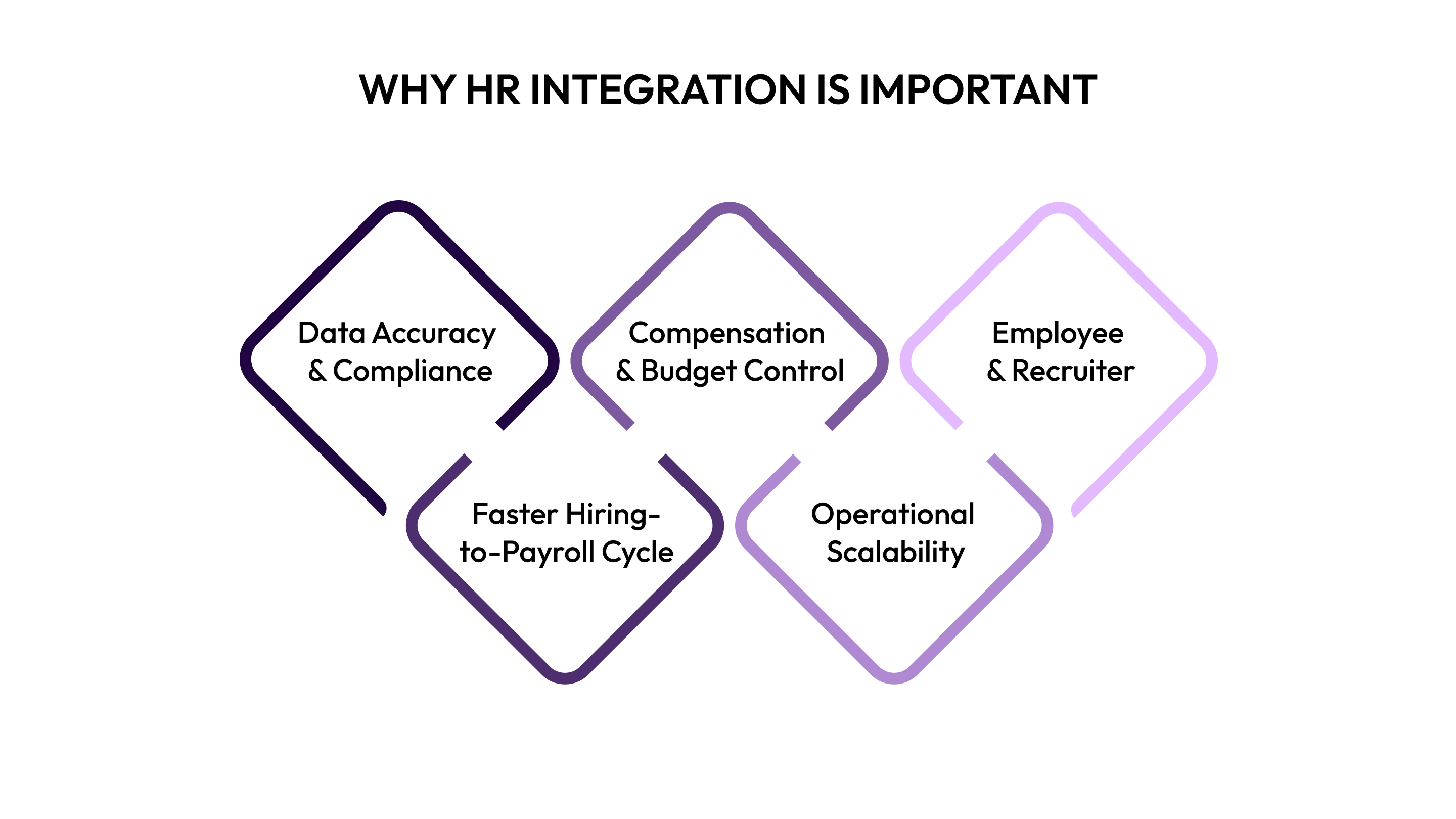
Here are five areas where strong HR Integration makes the biggest difference for scaling teams:
- Data accuracy and compliance: Linking payroll, benefits, recruiting, and onboarding provides consistent records, lowers the risk of fines, and protects against errors caused by disconnected employee files and outdated information.
- Faster hiring-to-payroll cycle: Directly connecting applicant tracking with payroll shortens onboarding timelines, helps recruiters close candidates quickly, and reduces administrative lag from weeks to just a few days.
- Compensation and budget control: Real-time sync between HR and finance platforms improves visibility into salary, bonus, and equity planning, helping CFOs and CPOs prevent overspending during rapid scale.
- Operational scalability: Automating updates like promotions, transfers, or role changes reduces repetitive admin work, allowing lean HR teams to manage thousands of employees without proportional headcount growth.
- Employee and recruiter experience: Unified data flow simplifies benefits enrollment, removes duplicate form-filling, and accelerates offer approvals, giving distributed teams and recruiters a smoother, less fragmented experience.
The real test of HR Integration isn’t in theory but in how it untangles payroll, recruiting, and finance problems. That’s where its top use cases come in.
Top Use Cases of HR Integration
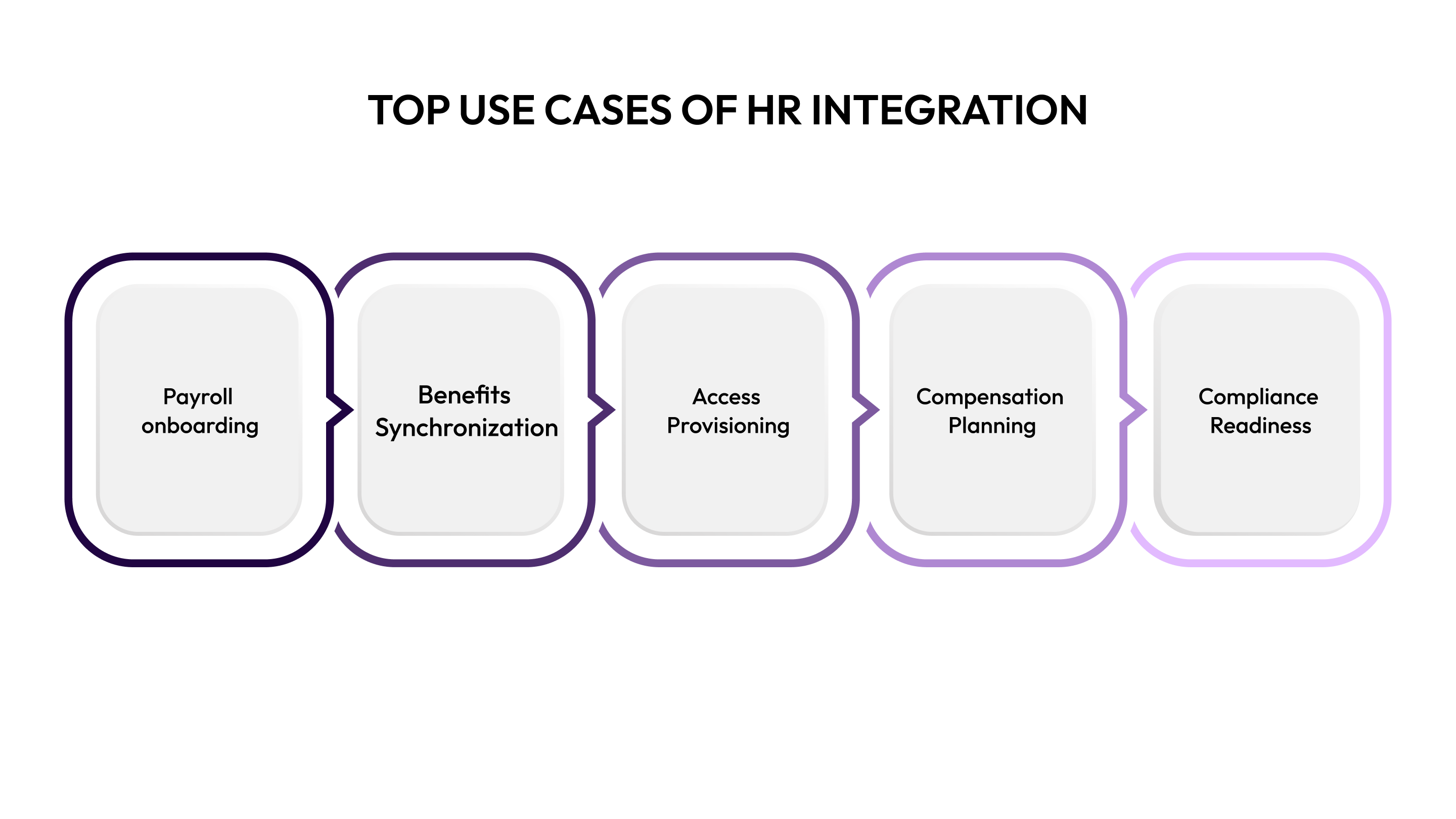
When teams scale quickly, the gaps between recruiting, payroll, and finance show up in missed records, duplicate entries, and slow approvals. HR Integration closes those gaps by connecting workflows end-to-end. The use cases below show where the impact is most tangible:
1. ATS → HRIS → Payroll onboarding
Connect HR Integration across ATS, background checks, e-sign, HRIS, and payroll so new hires move from offer to paycheck without rekeying, missed fields, or stale records across systems.
Key Benefits of HR Integration
- Shorter cycle time: Auto-create employee profiles, tax forms, and deductions; reduce duplicate entry; push start dates to payroll immediately; cut handoffs between recruiters, HR admins, and payroll coordinators.
- Compliance hygiene: Sync I-9, W-4, E-Verify results, and state forms to HRIS; keep audit trails; reduce missed signatures or outdated addresses that trigger penalties and rework cycles.
- Employee experience: Offer data pre-fills onboarding; single source fields flow to payroll and benefits; fewer emails; clearer status for distributed teams; day-one access to pay, benefits, and systems.
2. Payroll, time, and benefits synchronization
Link time tracking, payroll, and benefits to prevent pay errors, out-of-date deductions, or missed eligibility, especially during role changes, relocations, and variable pay cycles, monthly.
Key Benefits of HR Integration
- Accurate gross-to-net: Pull hours, overtime, premiums, and leaves from the time system; apply current rates, taxes, and benefits; reduce reversals, off-cycles, and costly manual adjustments during audits later.
- Benefits eligibility control: Keep eligibility, waiting periods, and life events aligned with payroll status; prevent missed enrollments or duplicate deductions; maintain carrier-ready feeds without brittle spreadsheets or attachments.
- Close collaboration Finance–HR: Export payroll journals with mapped departments, locations, and programs into accounting; headcount costs reconcile faster; CFOs spot anomalies across entities without juggling CSVs and reminders.
3. Identity and access provisioning from HR events
Connect HR Integration with identity management so that start, transfer, or exit events trigger account creation, license assignment, and deprovisioning, reducing idle accounts and support tickets.
Key Benefits of HR Integration
- Day-one productivity: Role-based groups, calendars, and apps assigned from HR attributes; managers avoid ad-hoc requests; new hires get correct permissions across SaaS, data rooms, and communication tools.
- Tighter offboarding control: Terminations disable accounts, revoke tokens, and archive mailboxes on the effective date; reduce orphaned access that creates compliance exposure across finance systems, repositories, and production tools.
- License spend discipline: Sync job changes and contractor end-dates to reclaim seats; allocate premium licenses only where needed; reports flag underused apps across departments to support budget control.
4. Compensation planning and offer control (HR ↔ Finance)
Connect HR Integration with compensation planning to sync employee data, salary structures, budgets, and approvals, producing consistent offers and cycle outcomes across fast-scaling, distributed teams.
Key Benefits of HR Integration
- Single source for cycles: Pull job architecture, pay ranges, tenure, performance, and equity holdings from HRIS; push changes to payroll; CandorIQ or similar tools orchestrate workflows and audit trails.
- Offer governance: Connect offers to budgets and comp bands; flag exceptions early; route approvals by amount, level, or location; prevent surprise spend across entities during hiring windows.
- Forecast-ready data: Feed merit, promotions, bonuses, and equity grants to FP&A; headcount costs reflect reality; finance can model scenarios without hunting spreadsheets across HRBP folders during planning.
5. People analytics, reporting, and compliance readiness
Bring HR Integration data into business intelligence (BI) to track headcount, turnover, hiring funnels, costs, and compliance statuses across entities and locations with definitions and refresh cadence.
Key Benefits of HR Integration
- Trustworthy dashboards: Standardize fields and effectively-dated changes; avoid conflicting headcount numbers; maintain metric definitions that finance and HRBP leaders accept during board prep and quarterly operating reviews.
- Regulatory reporting readiness: Generate EEO-1, ACA, and state reports from the same feeds that drive payroll; reduce scramble sprints; keep historical point-in-time views for audits and legal requests.
- Quarterly planning clarity: Join recruiting demand, offers, acceptances, and start dates with attrition; give CFOs visibility into seat fill rates, ramp timing, and budget impacts without spreadsheet gymnastics.
Use cases show the what of HR Integration, but the how determines success. Best practices are where companies prevent small cracks from becoming costly system failures.
.png)
Once the basics of HR Integration are in place, many teams start asking what’s next. A big part of that answer is in AI in HR: How Teams Use It & What’s Next.
Best Practices for Smooth HR Integration
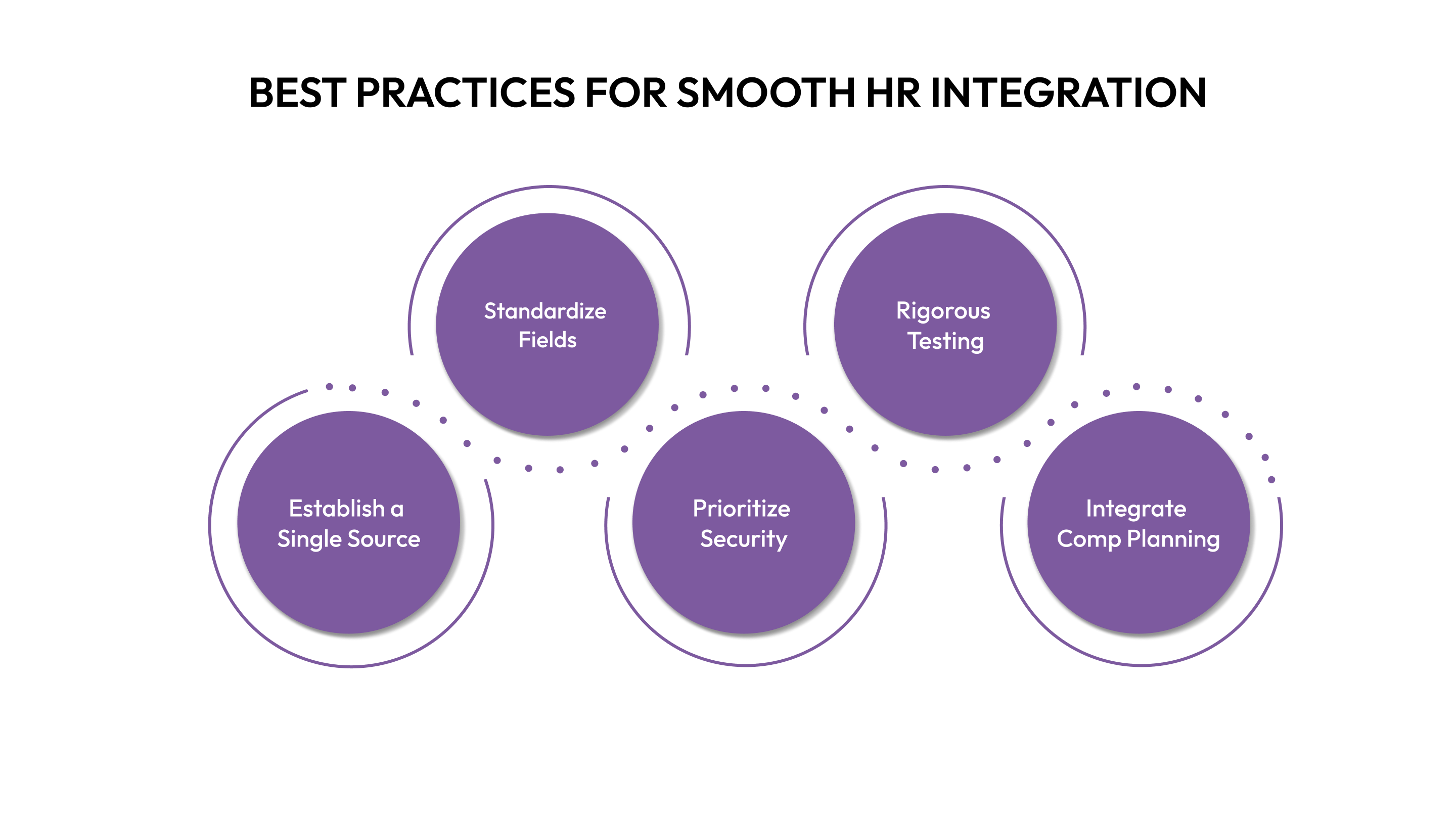
Scaling companies feel the pressure of fragmented systems most acutely in payroll errors, compliance gaps, and stalled approvals. HR Integration holds up only if anchored in consistent practices:
- Establish a single source of truth: Designate the HRIS as the authoritative record; define which system controls each field; prevent edits downstream; publish data contracts for consistency.
- Standardize fields and data quality: Normalize job codes, currencies, and locations; maintain effective-dated history; reconcile duplicates before migration; document transformations to reduce mismatches across payroll, benefits, and analytics.
- Prioritize security and compliance: Apply SSO and SCIM provisioning; enforce least-privilege access; rotate credentials; encrypt sensitive fields; audit changes; align retention schedules with federal and state employment regulations.
- Phase rollout with rigorous testing: Pilot low-risk flows; expand gradually; test rehires, transfers, and multi-state tax edge cases; simulate failures; track cycle times and publish cutover schedules.
- Integrate comp planning and finance visibility: Lock pay ranges, currencies, and equity types; sync offers with budgets; route approvals; platforms like CandorIQ connect HR Integration with payroll and finance.
Even the strongest practices don’t stay static for long. The way HR Integration is being built and connected is already shifting, and recent trends make that clear.
Top Trends of HR Integrations That Have Come Up So Far
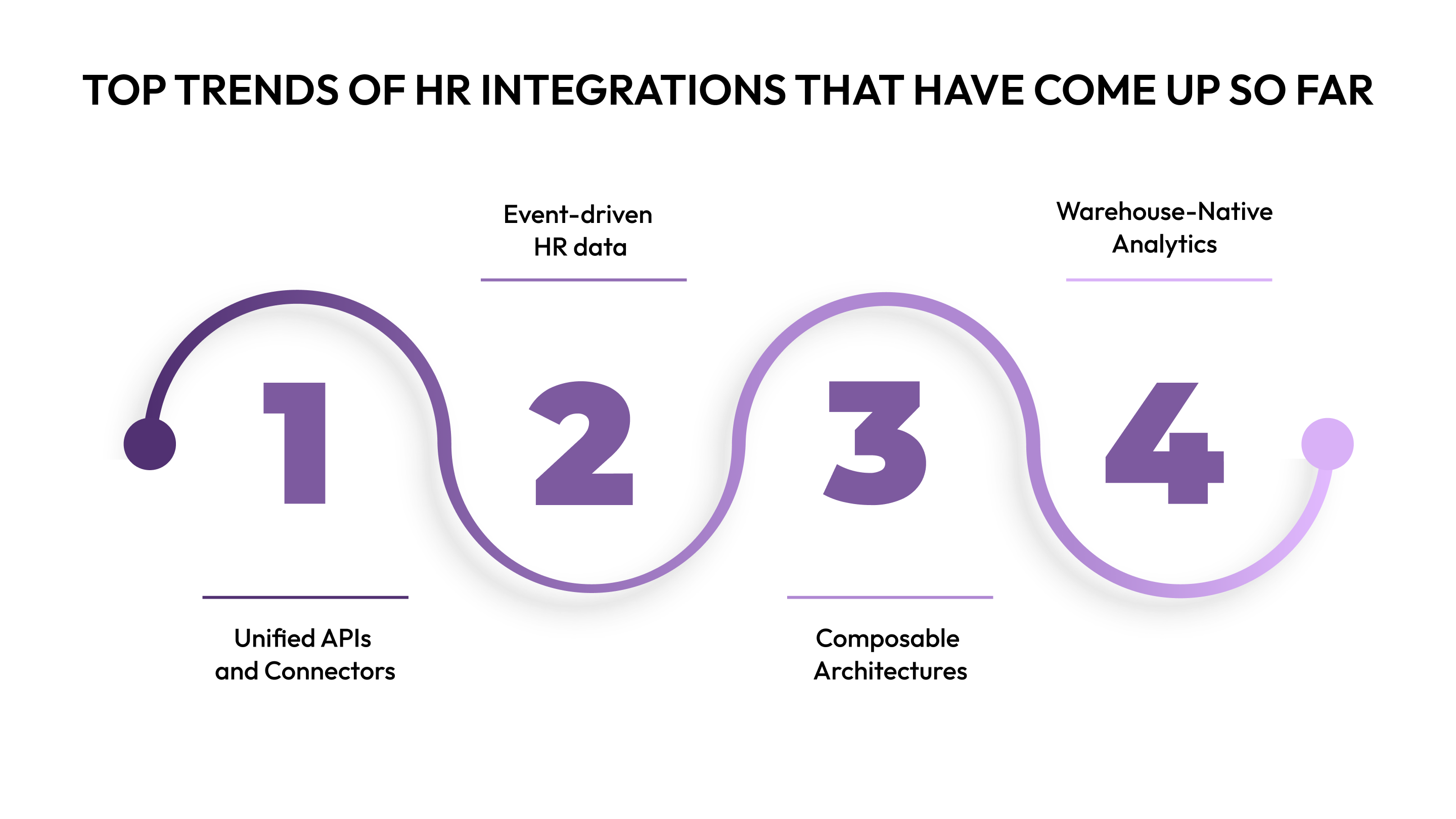
As companies add headcount and new systems, the weak spots show up fast; missed syncs, compliance gaps, and reporting headaches. These trends in HR Integration reflect how leaders are addressing those realities:
- Unified APIs and connectors: HR Integration increasingly uses unified APIs and connectors to cut maintenance, accelerate partner onboarding, and standardize schemas across payroll, HRIS, benefits, accounting, and identity platforms.
- Event-driven HR data: Webhooks and SCIM push HR Integration events so hires, transfers, and terminations update downstream systems instantly, reducing errors, preventing orphaned access, and strengthening audit trails.
- Composable architectures: Teams assemble best-fit stacks around HR Integration using open APIs, data contracts, monitoring, and schema versioning to avoid lock-in and stabilize cross-system outcomes.
- Warehouse-native analytics: HR Integration streams effective-dated tables into warehouses; finance and HRBPs share definitions for headcount, pay, funnels, and compliance, improving board reporting and audits.
Achieve Smarter HR Integration with CandorIQ
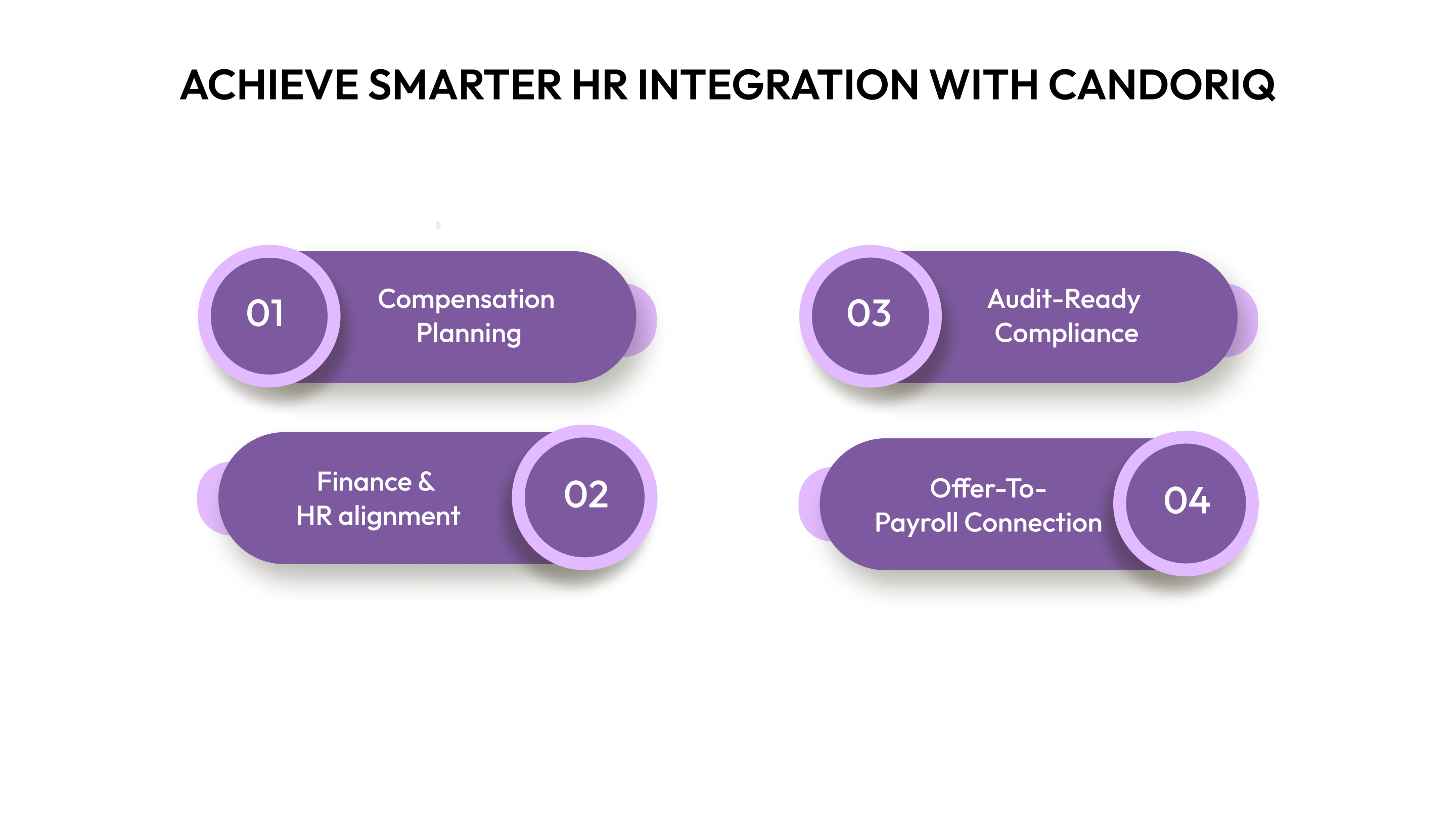
HR integration is only valuable if compensation, finance, and recruiting data flow into one reliable system. CandorIQ was built for growth-stage companies that need clarity across hiring, pay, and budget, without the manual chaos of spreadsheets and fragmented approvals.
Key Features for Scaling Teams:
- Compensation planning made consistent: Connect pay ranges, equity, and bonus structures directly to headcount models, keeping offers aligned with budgets across entities and geographies.
- Finance and HR alignment: Sync HR data with budget forecasts so CFOs and CPOs share one source of truth for salary, equity, and benefit costs.
- Audit-ready compliance: Track approvals, equity grants, and pay adjustments with full audit trails, reducing compliance exposure during rapid hiring or multi-state expansion.
- Offer-to-payroll connection: Simplify approvals and sync changes directly into payroll systems, cutting delays and minimizing data-entry errors.
Final Thoughts!
Growth rarely breaks because of a lack of ambition; it breaks when payroll, recruiting, and finance operate on different truths. That’s where the value of strong HR integration shows up most clearly: fewer errors, faster cycles, and cleaner financial visibility.
CandorIQ helps scaling companies build that foundation by connecting compensation planning, equity tracking, and budget control into one workflow. Instead of juggling spreadsheets and approvals across teams, you get clarity and control as headcount expands.

Ready to simplify compensation planning and stay ahead of growth? Get in touch with us today.
FAQs About HR Integration
1. Can HR Integration handle multi-entity or subsidiary structures?
Yes. Modern HR integrations can map different EINs, cost centers, and legal entities so payroll, benefits, and reporting stay accurate across subsidiaries.
2. How do HR Integrations manage historical data during system changes?
Effective integrations preserve effective-dated records, allowing payroll audits, equity vesting, and compliance reporting to reference prior states without losing context after a system migration.
3. What happens if an integration fails mid-cycle?
Well-built HR integrations include retry logic, error queues, and alerting. This ensures payroll or benefits updates don’t silently fail and create compliance risks.
4. Do HR Integrations support equity and stock plan data?
Yes. With the right connectors, HR integrations sync equity grants and vesting schedules into payroll and finance, giving CFOs a clear view of total compensation.
5. How are security and access controls enforced across integrated systems?
Most integrations rely on SSO and SCIM provisioning. HR-triggered events (hires, transfers, exits) enforce least-privilege access, reducing orphaned accounts and audit exposures.


